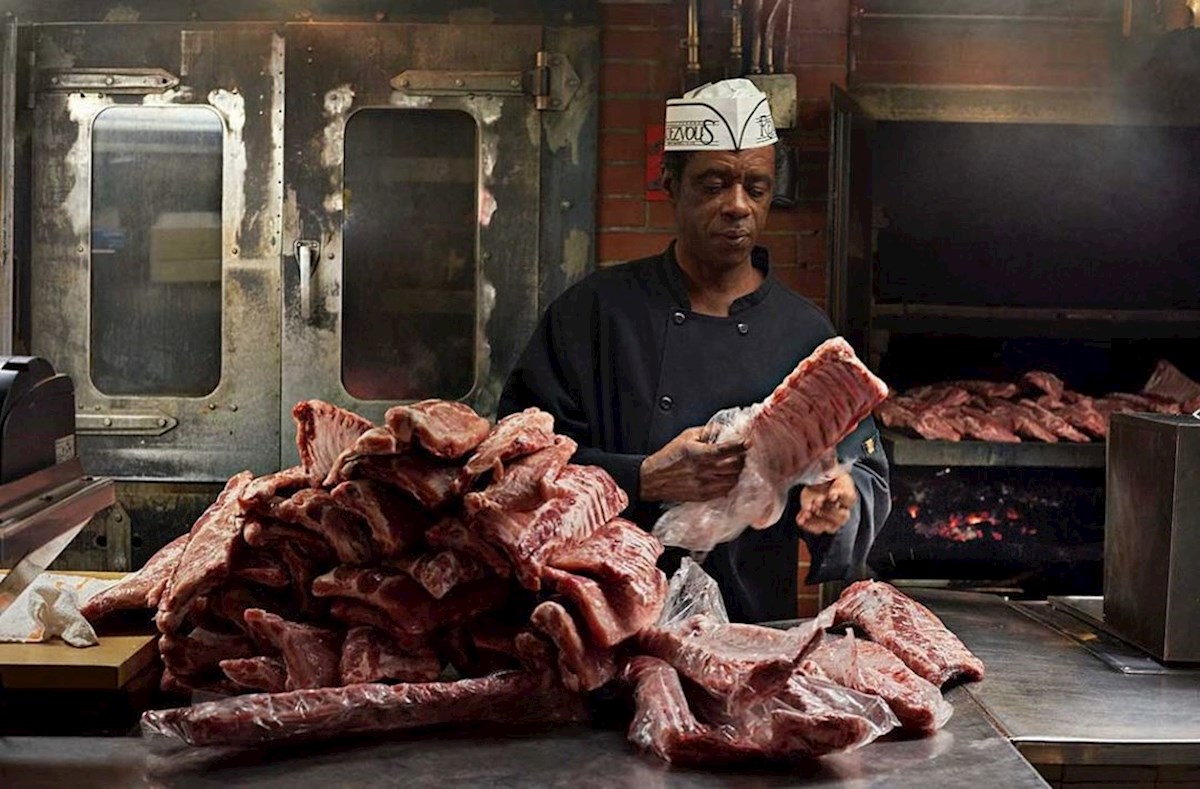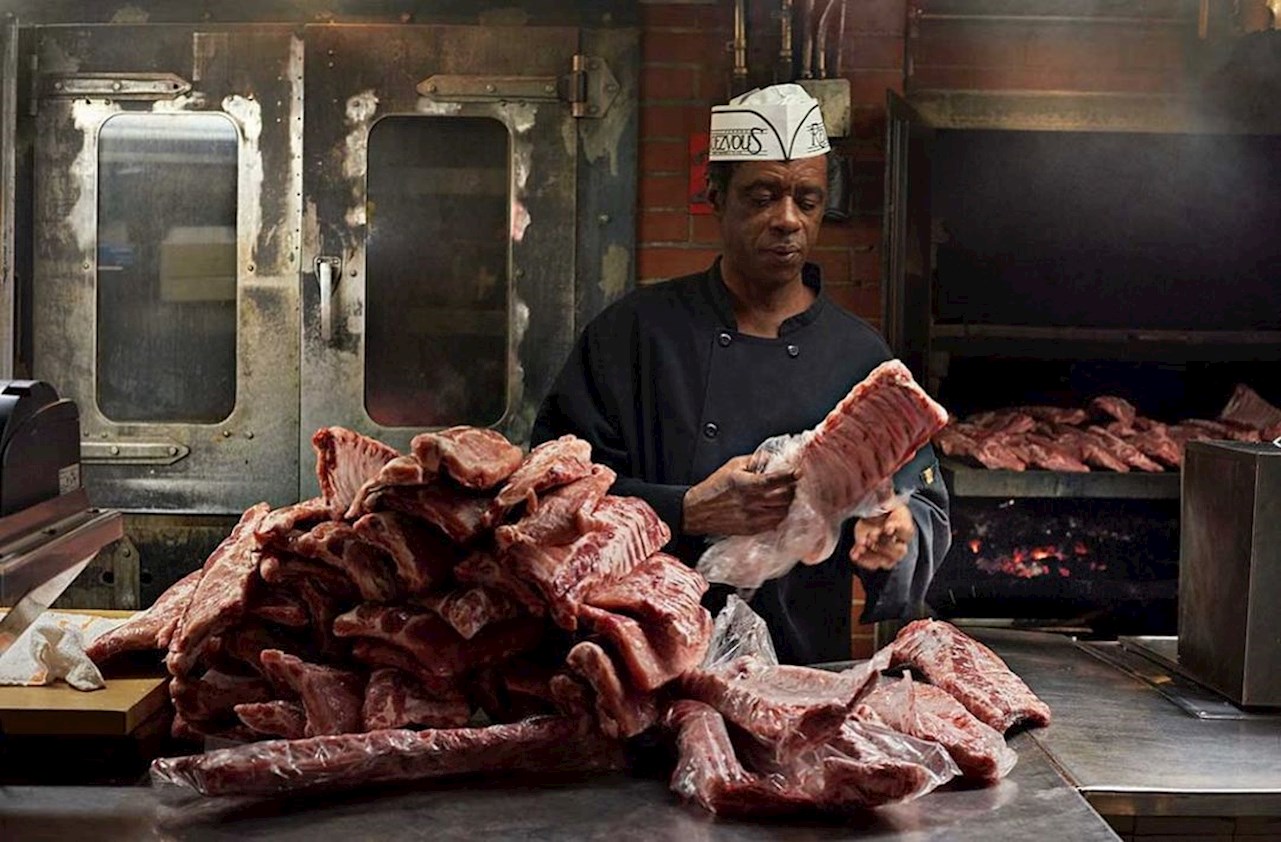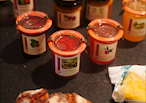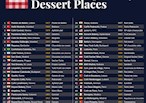As the fireworks crackle in the July sky, a distinctly American tradition comes to life across backyards and picnic parks of the country – the iconic 4th of July barbecue. While many people around the world may envision barbecue as a standard event with a simple grilled steak or sausage, American barbecue is a different story.
Across the United States, different regions boast their unique barbecue styles, each with its own distinctive meats, cooking techniques, and sauces. It is a culinary journey, one that is deeply entrenched in history, tradition, and regional pride. Join us as we explore the rich tapestry of regional barbecue styles that make up the classic American BBQ experience.
The Four Pillars of the American BBQ
In the American tradition, there are four prominent BBQ regions: Kansas City, Carolina, Memphis, and Texas. These four barbeque styles represent the most recognized regional renditions of smoked meat. You’ll find each style's techniques, rubs, and sauces copied across the U.S. From their cuts of choice to their sides, read on to learn what makes each of the four major American BBQ regions unique.

Kansas City-Style Barbecue: It's all about that sweet sauce
Barbecued meat is the gastronomic passion of the so-called "world capital of barbecue," also known as Kansas City. Barbecued pork ribs, flavorful slices of hot or cold beef brisket, or a "pig salad" of succulent pulled pork - those are just some of the delicacies of the Kansas City-style barbecue. What sets Kansas City barbecue apart is its distinctive sauce. Unlike vinegar-based sauces in the Carolinas or the simple 'mop' of Central Texas, Kansas City BBQ sauce is thick, sweet, and tangy, with a strong tomato and molasses base. This sauce is typically served on the side, allowing diners to add as much or as little as they like.
 Brisket Credits: Slap's BBQ
Brisket Credits: Slap's BBQ
This BBQ style is particularly famous for its barbecue ribs, which are generously slathered with the sauce. The ribs are smoked until they're fall-off-the-bone tender, then finished with a final glaze of sauce that caramelizes onto the ribs, adding a deliciously sweet and smoky crust.
Another Kansas City BBQ specialty that has gained nationwide fame is 'burnt ends.' These flavorful nuggets are cut from the point half of a smoked beef brisket, a particularly fatty section. The pieces are returned to the smoker to further caramelize and concentrate the flavors. Once considered leftovers, burnt ends are now a sought-after delicacy, offering a mouthwatering combination of crispy bark, tender meat, and rich, smoky flavor.
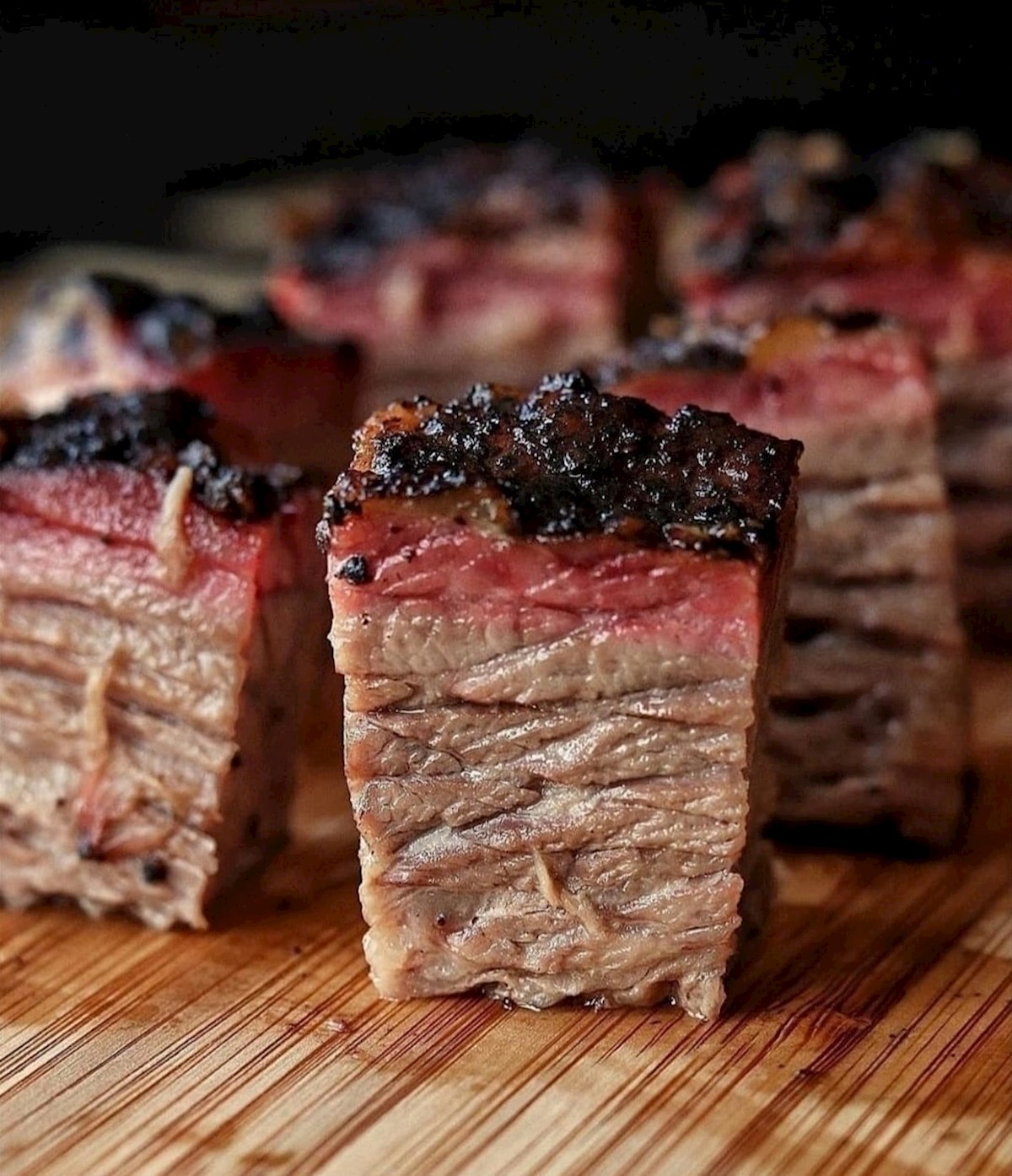 Burnt ends Credits: Chef's Cut Real Jerky Co.
Burnt ends Credits: Chef's Cut Real Jerky Co.
The barbecue craze in Kansas City dates back to around 1908, when Henry Perry, an African-American chef, first started slow-cooking pork ribs over oak and hickory, drizzling them with a sauce consisting of molasses, chiles, and tomatoes. He served the meal in a newspaper and sold it for 25 cents a piece, and the consumers' acceptance and love of barbecued meat went better than expected.
Kansas City's barbecue tradition has been celebrated and preserved through numerous BBQ joints throughout the city, each boasting its unique recipes and techniques.
ICONIC KANSAS CITY-STYLE BBQ PLACES:
● Joe's Kansas City Bar-B-Que
● Slap's BBQ
● 18th & Vine
● Woodyard Bar-B-Q
● LC's Barbeque
Two distinct styles of Carolina Barbecue
In the Carolinas, barbecue takes on a whole new dimension with two distinct styles: South Carolina-Style Barbecue and North Carolina-Style Barbecue.
What sets apart South Carolina barbecue from North Carolina-style barbecue is the yellow Carolina Gold sauce in the Midlands, consisting of cider vinegar, yellow mustard, spices, honey, and brown sugar, while the Pee Dee region uses a fiery sauce based on vinegar and pepper.
SOUTH CAROLINA-STYLE BARBECUE
South Carolina barbecue is mostly based on pork. Sometimes it's pulled from a whole hog and sometimes the meat is chopped from a shoulder or ham. The meat is traditionally cooked and smoked over hardwood such as oak or hickory.
This style of barbecue is also famous for its "Carolina Gold" sauce. It is a mustard-based sauce, a deviation from the vinegar-based sauces common in other regions. The mustard-based sauce is believed to have been influenced by the German immigrants who settled in the region.
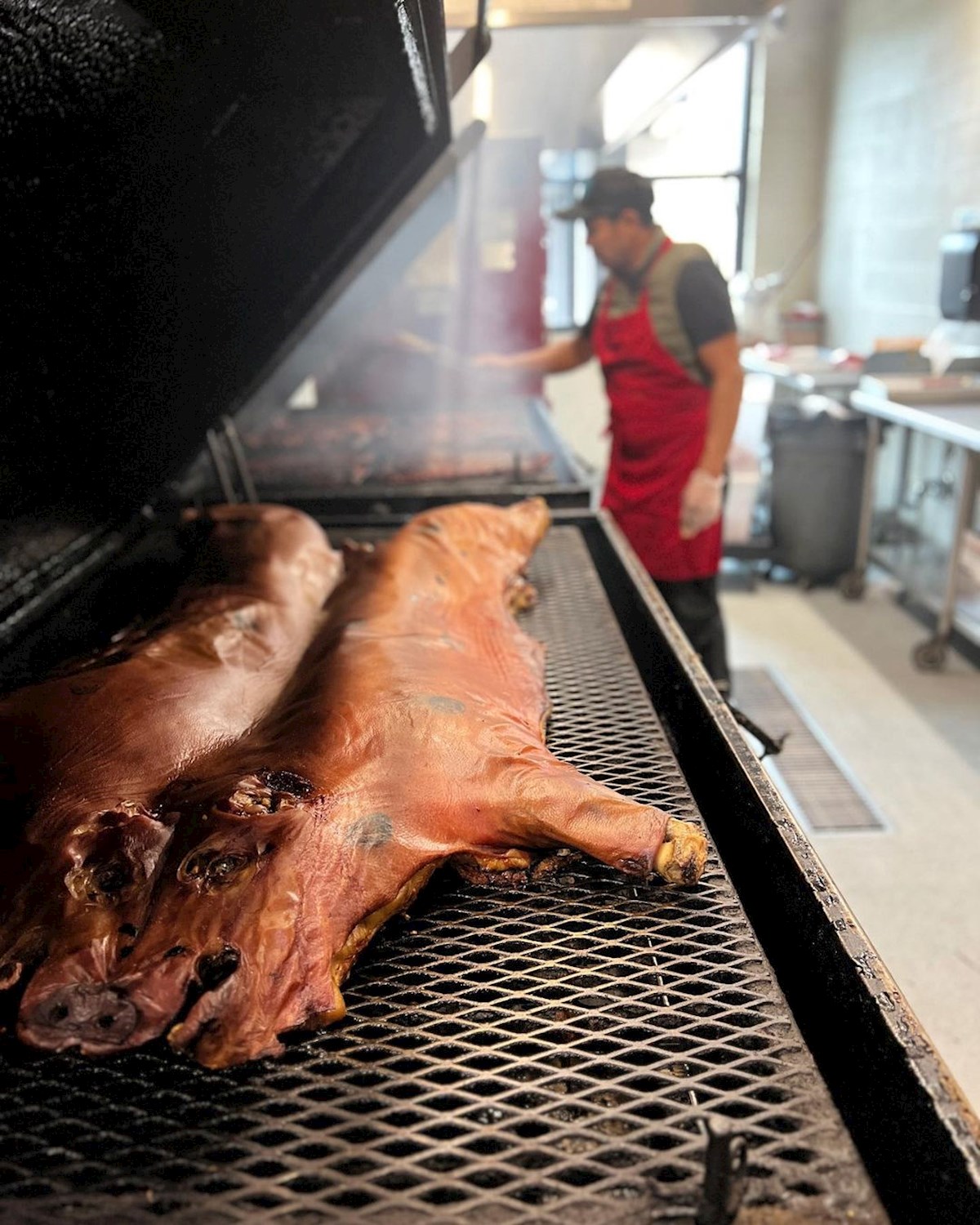 Whole hog BBQ Credits: Rodney Scot's BBQ
Whole hog BBQ Credits: Rodney Scot's BBQ
ICONIC SOUTH CAROLINA-STYLE BBQ PLACES:
NORTH CAROLINA-STYLE BARBECUE
North Carolina barbecue can be split into two halves – in the east, they use the whole hog, while in the west, also known as Lexington-style barbecue, smokes only the pork shoulder.
Eastern barbecue is usually chopped with a vinegar-and-spices-based sauce, while Lexington-style is typically used for sandwiches with a tomato-based sauce. Sides also differ between the two styles. Eastern style is typically served with boiled potatoes and coleslaw. Lexington-style barbecue often comes with a side of "red slaw" (coleslaw made with the same ketchup-infused sauce instead of mayonnaise) and hush puppies.
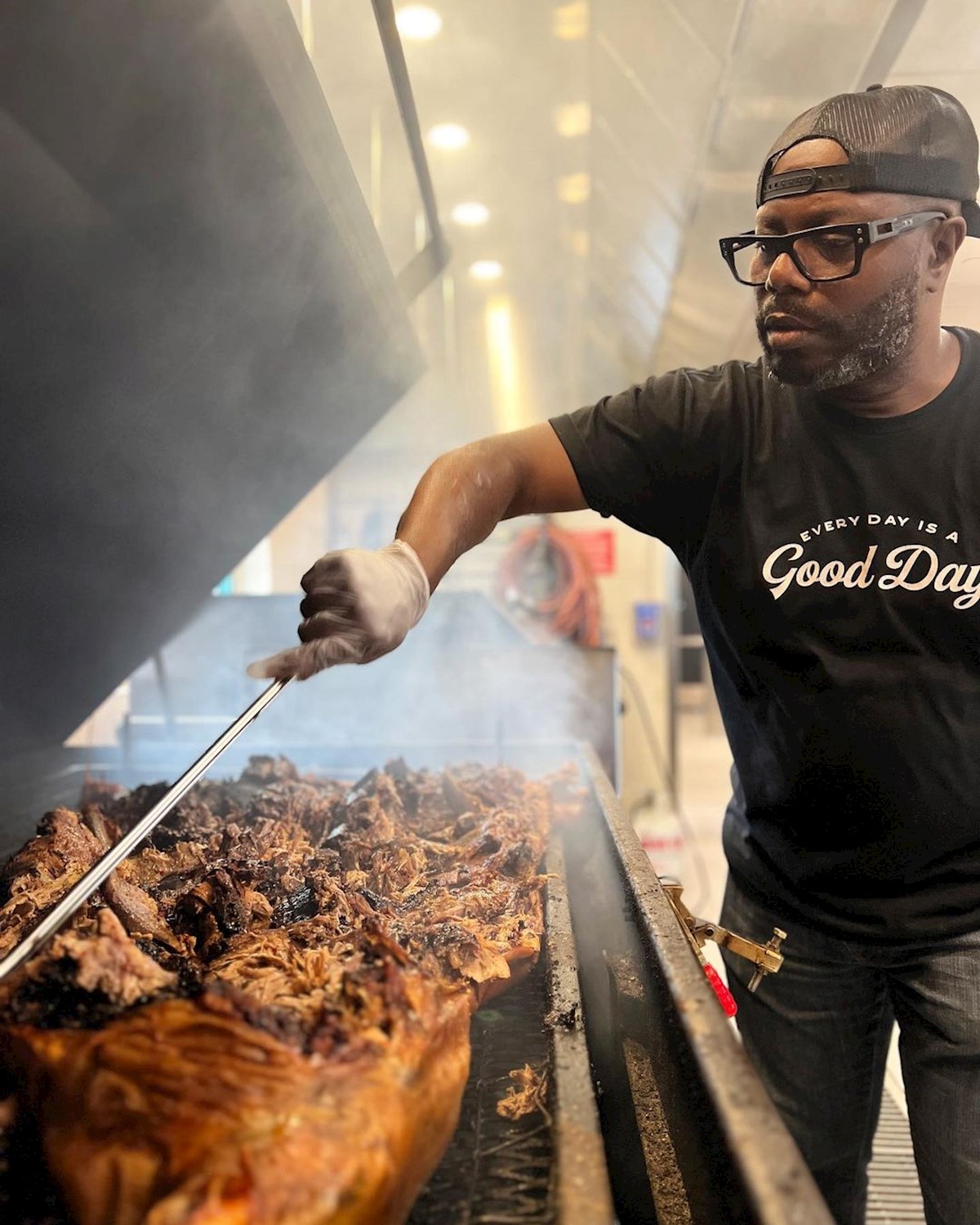 Credits: Rodney Scott's
Credits: Rodney Scott's
ICONIC NORTH CAROLINA-STYLE BBQ PLACES:
● Lexington Barbecue
● Doumar's Cones and Barbecue
● Willie Brooks BBQ Boone
Memphis-Style Barbecue - the Champion of Smokey Ribs
Known worldwide as the "Home of the Blues & Birthplace of Elvis Presley and Rock' n' Roll" - not to mention gospel, jazz, R&B, rap, and soul, Memphis is also renowned as the Pork Barbecue Capital of the World.
Memphis-style barbecue is slow-cooked in a pit, and ribs can be prepared either "dry" or "wet." Dry rub ribs are typically seasoned with paprika and salt, giving them a rich red color, while wet ribs are usually brushed with a barbecue sauce. Combined with smoke and heat, the ribs develop a range of complex flavors during the barbecue process.
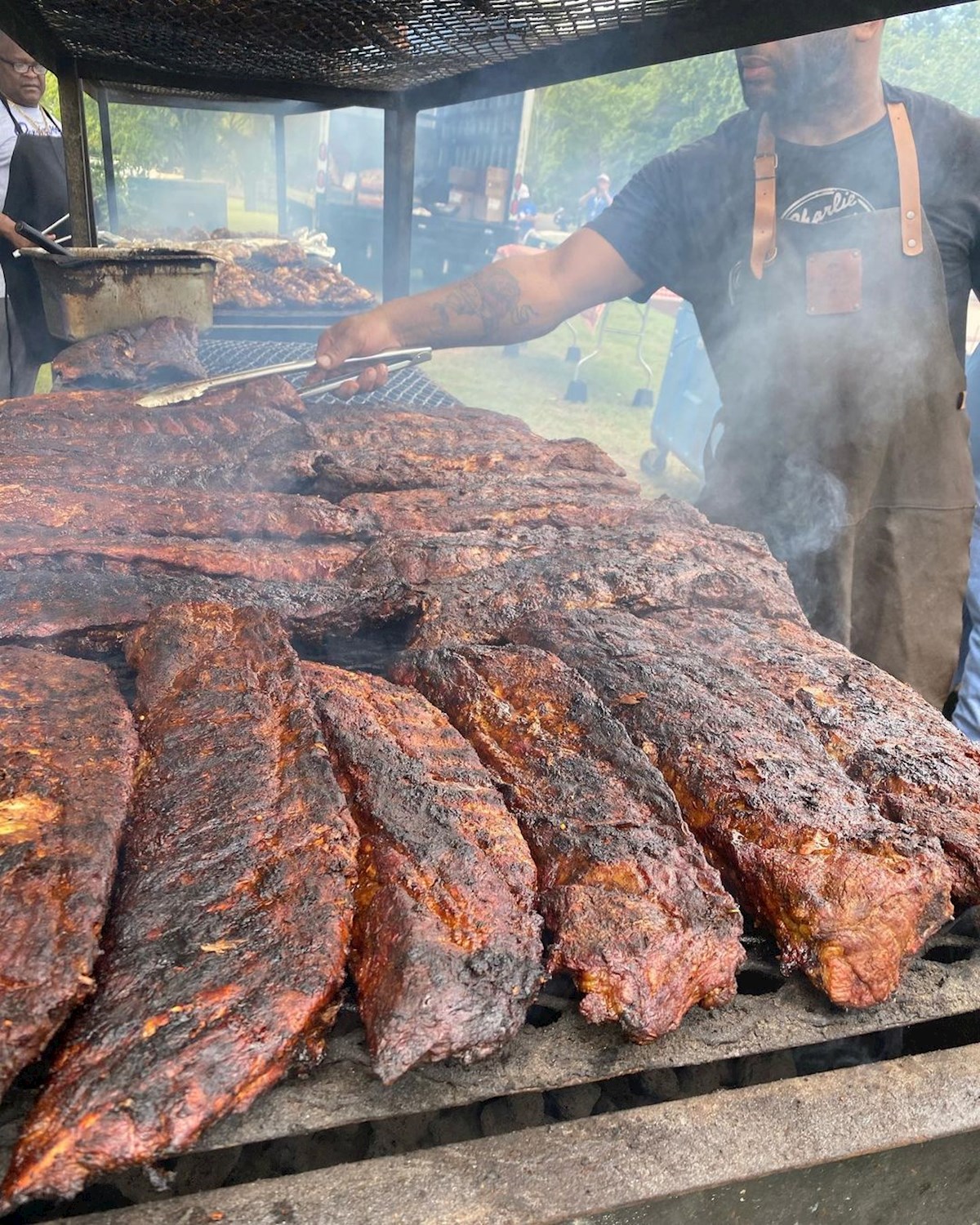 Memphis Style BBQ Credits: Charlie Vergos Rendezvous
Memphis Style BBQ Credits: Charlie Vergos Rendezvous
ICONIC MEMPHIS-STYLE BBQ PLACES:
● Central BBQ
● The Bar-B-Q Shop
● Charlie Vergos' Rendezvous
● Payne's Bar-B-Q
● Pappy's Smokehouse
Four Styles of Texas Barbecue
Everything is bigger in Texas, and that includes their love for barbecue. When we are talking about Texas BBQ, in fact, we are talking about four different subcategories: Central Texas, East Texas, South Texas, and West Texas barbecue.
CENTRAL TEXAS-STYLE BARBECUE
When most say "Texas-style" barbecue, they really mean Central Texas-style meats. Brisket, in particular, is the star of the show, although other meats like pork ribs and sausage are also popular. The brisket is rubbed simply with salt and pepper – the so-called "Dalmatian rub" – and then smoked over oak, a wood that imparts a distinct, strong flavor without overpowering the meat.
The result is a tender, juicy brisket with a smoky, peppery bark that's truly a Texas signature. The meat is carved in front of the customer, and it is traditionally served on butcher paper (as an homage to the meat markets of yore), most often without any type of barbecue sauce on the side.
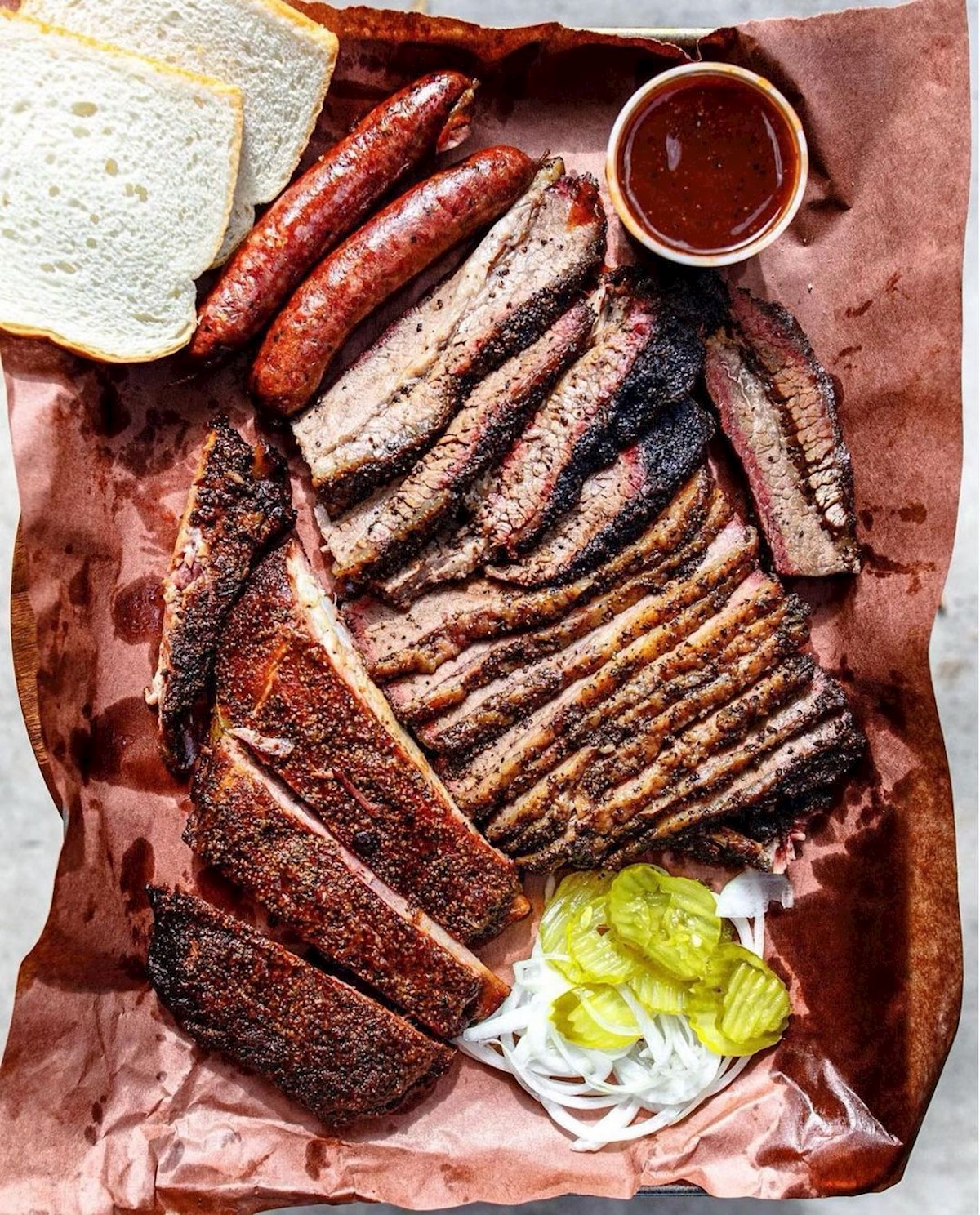 Central Texas Style BBQ Credits: Franklin Barbecue
Central Texas Style BBQ Credits: Franklin Barbecue
ICONIC CENTRAL TEXAS-STYLE BBQ PLACES:
● Franklin Barbecue
● The Salt Lick BBQ
● La Barbecue
● Louie Mueller Barbecue
● Opie's Barbecue
EAST TEXAS-STYLE BARBECUE
The East Texas-style is characterized by the acceptance of pork and an emphasis on barbecue sauce. Pork ribs and smoked boudin are staples of East Texas-style barbecue, and the sides include some interesting things such as greens, fried okra, and banana pudding.
Meats like pork ribs, beef brisket, and even chicken are slow-cooked until they're falling-off-the-bone tender, much like in a traditional Southern barbecue. The meats are then typically marinated in a sweet, tomato-based sauce that adds a tangy flavor. This style of barbecue is commonly chopped rather than sliced and served on a bun.
 Credits: Snow's BBQ
Credits: Snow's BBQ
ICONIC EAST TEXAS-STYLE BBQ PLACES:
● Snow's BBQ
● Gatlin's BBQ
● Joseph's Riverport Barbecue
● Stanley's Famous Pit Bar-B-Q
● Patillo's Bar-B-Q
SOUTH TEXAS-STYLE BARBECUE
South Texas-style is heavily influenced by Mexican traditions, particularly the practice of barbacoa. This technique involves cooking meat in a pit dug into the ground. While the method was initially used for cooking whole animals, modern barbacoa often centers around cow's head—especially the cheek, known as cachete. The meat is wrapped in maguey leaves, which add a unique flavor during the slow-cooking process. The result is incredibly tender, flavorful meat that's often used in tacos and served with traditional Mexican sides.
South Texas BBQ, with its barbacoa tradition, is a significant part of cultural and familial gatherings in the region. These BBQ events often extend beyond the meal itself, encompassing an entire day of preparation, cooking, and communal eating. South Texas BBQ is an excellent example of how regional barbecue styles can reflect a unique blend of local history, cultural influences, and traditional cooking methods.
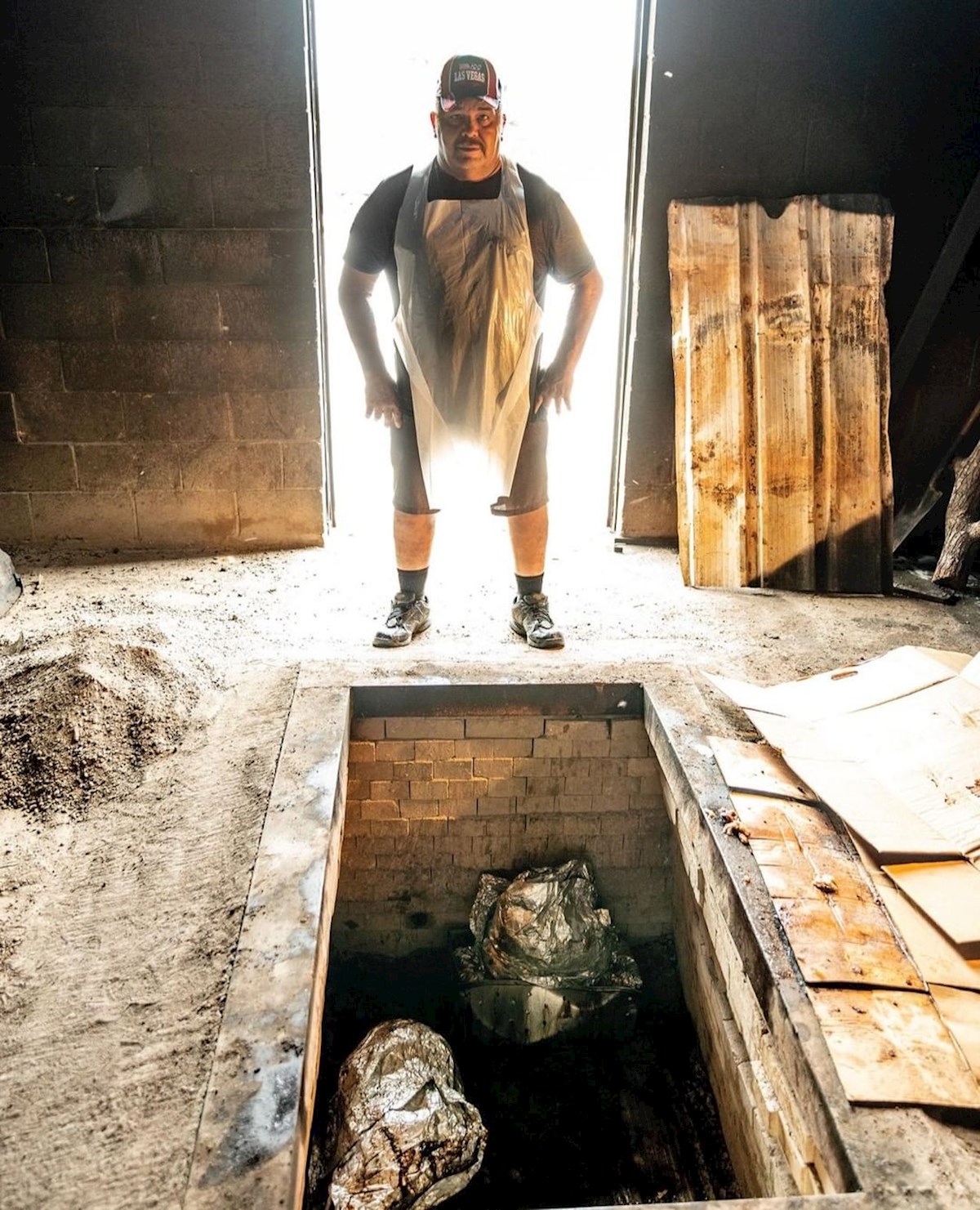 Barbacoa Credits: Texas Highways Magazine
Barbacoa Credits: Texas Highways Magazine
ICONIC SOUTH TEXAS-STYLE BBQ PLACES:
WEST TEXAS-STYLE BARBECUE
West Texas barbecue, also known as "cowboy style," has its roots in the history of cattle drives and cow camps of the American West, and it reflects the practical and straightforward ethos of cowboy culture.
This barbecue style is characterized by a direct-heat method similar to grilling, in contrast to the slow smoking common in other regions. Meats are cooked over mesquite wood, imparting a strong, smoky flavor. With its hearty meats, mesquite smoke, and direct-heat cooking, it's a flavorful testament to the culinary traditions of the American West.
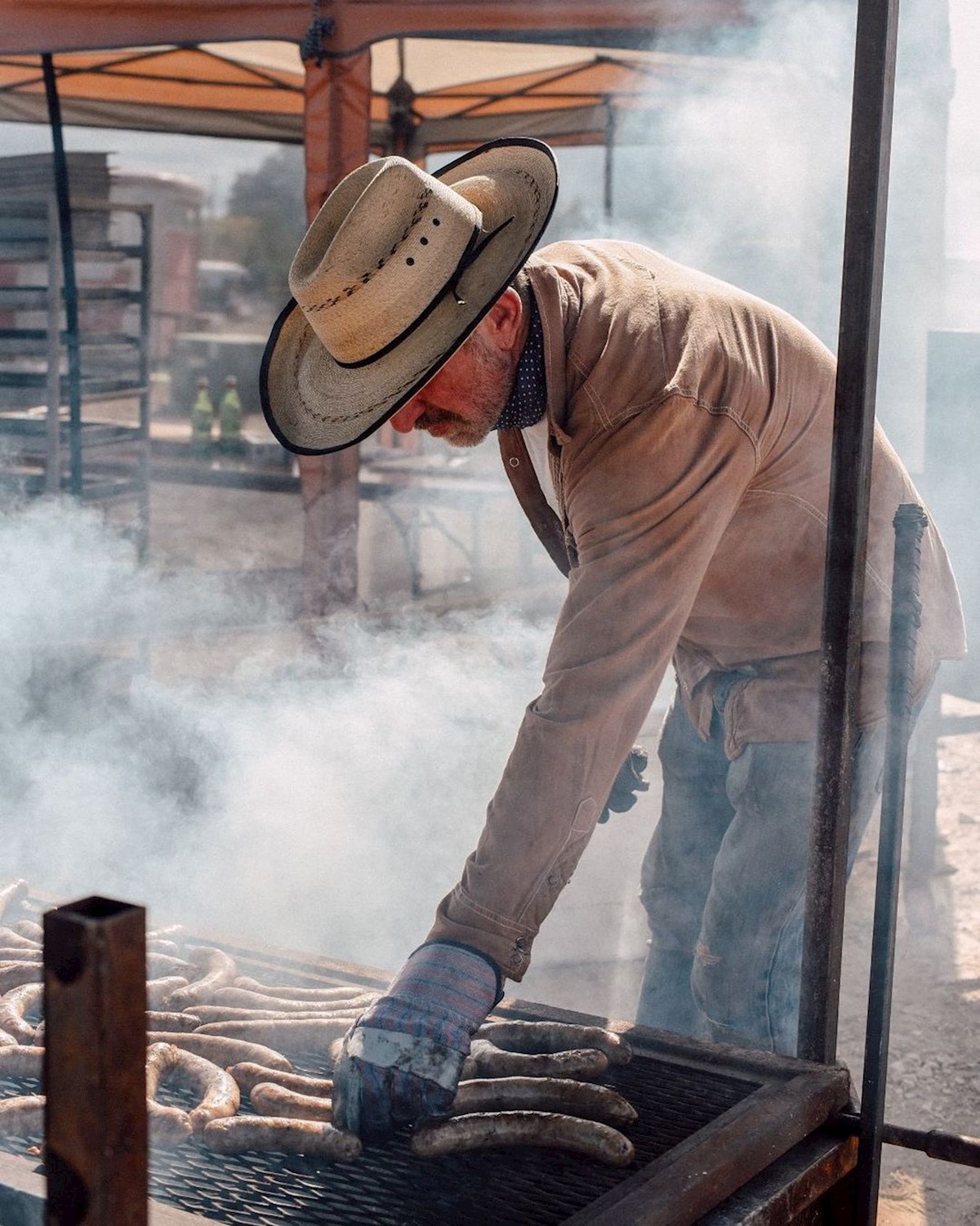 Credits: Mill Scale Metalworks
Credits: Mill Scale Metalworks
ICONIC WEST TEXAS-STYLE BBQ PLACES:
● Pody's BBQ
● The Shack, BBQ
● Big Boys Bar-B-Que
In all its regional variations, Texas BBQ reflects the state's history and diverse cultural influences, creating a unique blend of flavors that are celebrated across the country and beyond. Whether it's the peppery brisket of Central Texas or the smoky, direct-heat barbecues of the West, the Texan love for BBQ is a testament to the state's culinary richness.
As we've explored, the United States has several distinct barbecue styles, and the 4th of July is an excellent opportunity for people to celebrate their local traditions. From coast to coast, grills and smokers are fired up to cook a range of meats. Whether it's a Carolina-style pig roast, a Kansas City burnt ends cookout, or a Texas brisket smoke-out, BBQ takes center stage on this day.
